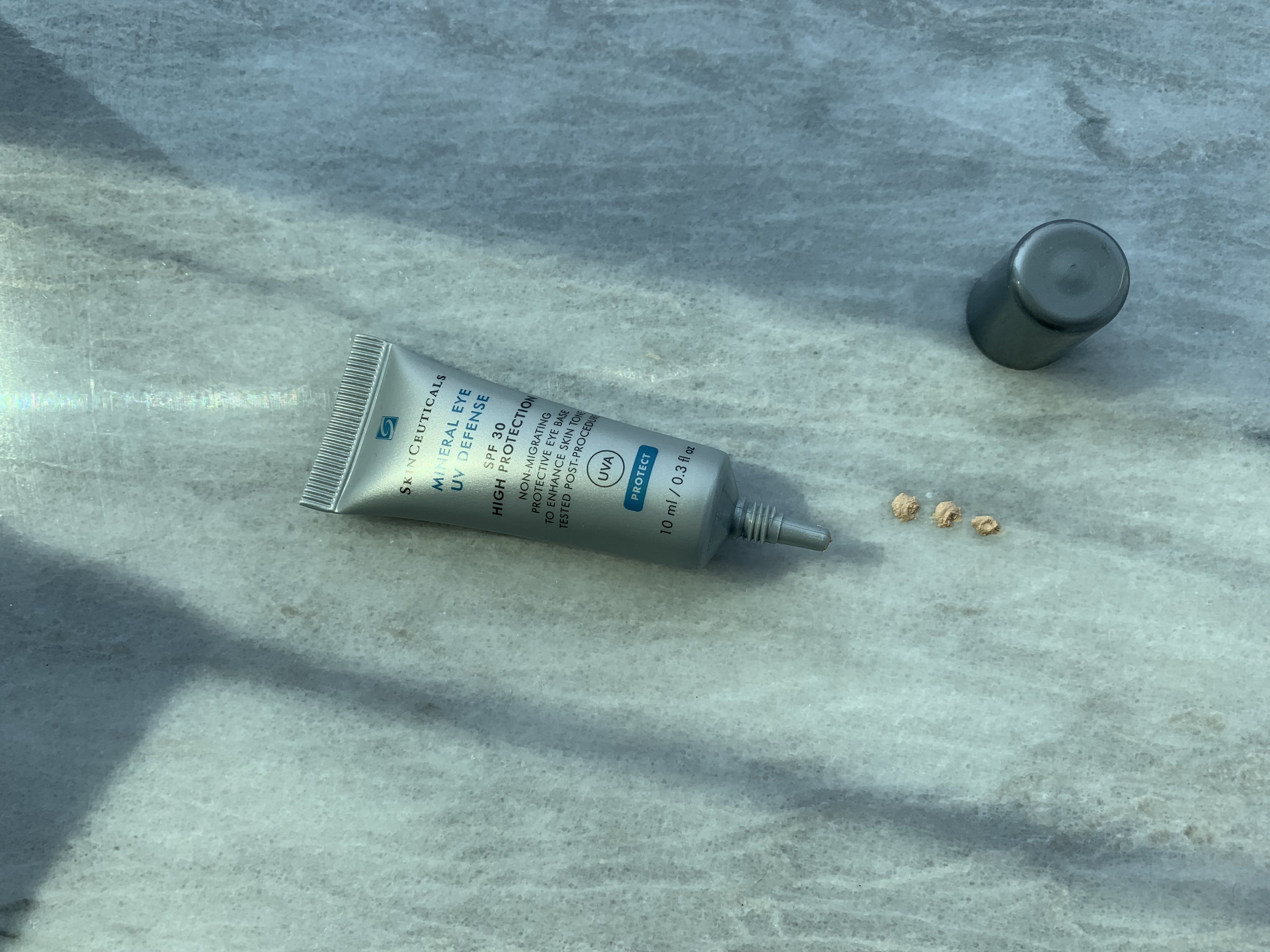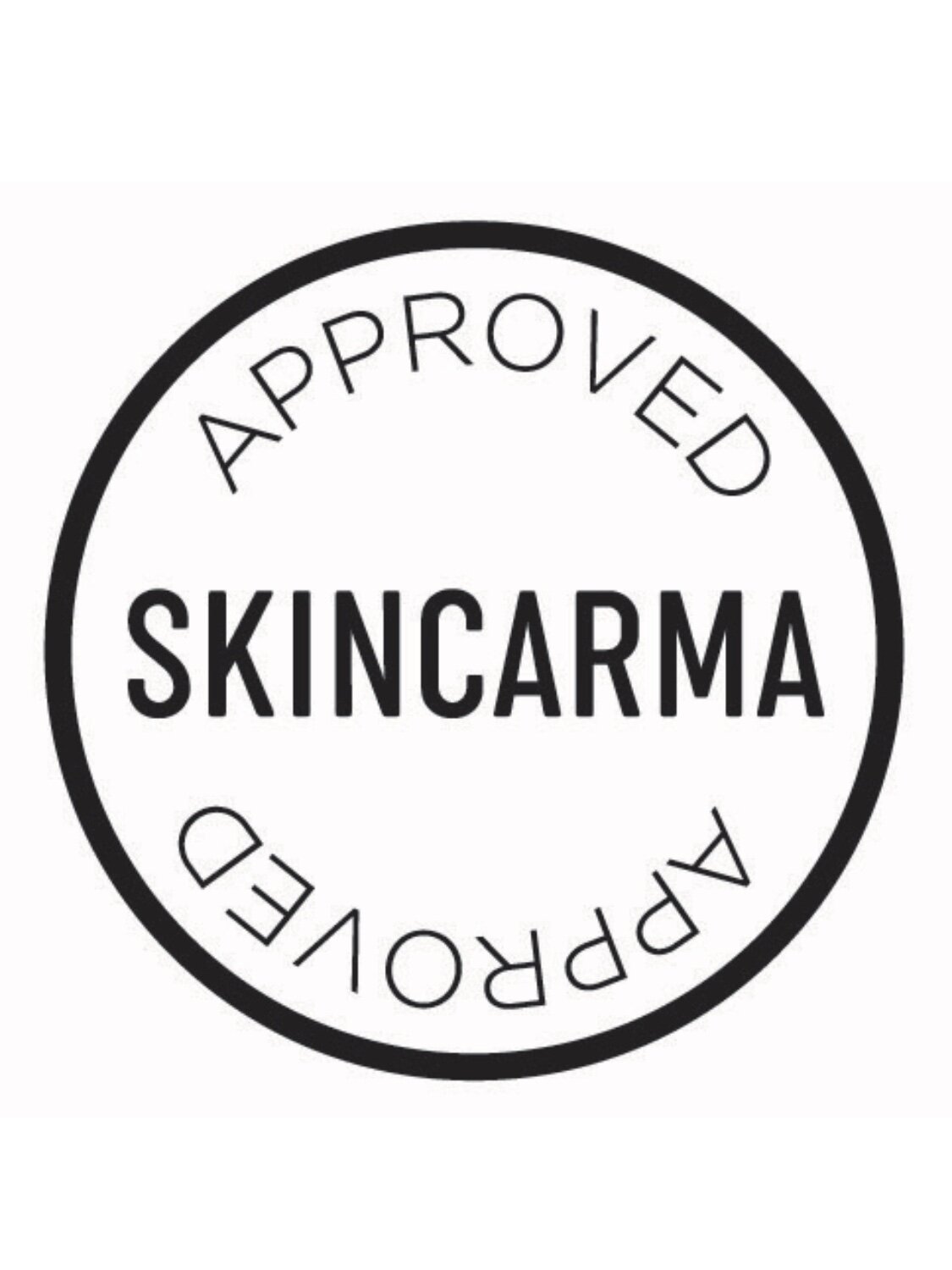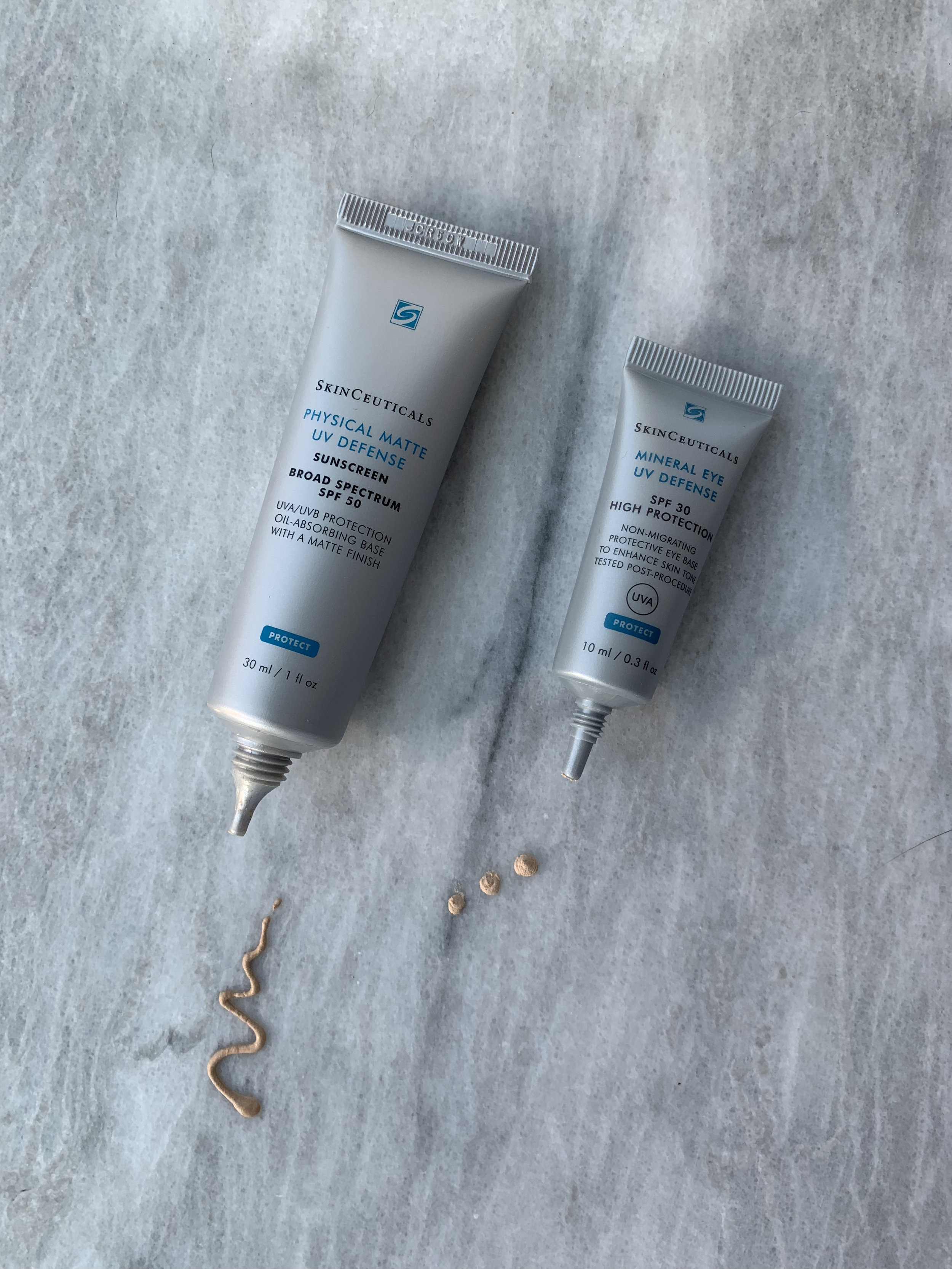SKINCARE 101: EYE SPF AND THE BEST PRODUCT FOR DARK CIRCLES
Orpheus will always find the sunny spot to lounge in.
Unless you’re a cat, you need to wear sunscreen when you’re in the sun. I have a motto at Skincarma that says,
If you can see the sun, the sun can see you!
Protection from sun damage is everything when it comes to skin health. And I think there are several suncare-related myths out there that it’s high time we put to bed. Back in my days at Kiehl’s, we often quoted one of the family founders when it came to the importance of sun protection. Her caveat went something like this: “We at Kiehl’s have long espoused the importance of shielding your skin from the sun’s harmful rays – even on seemingly ‘sunless,’ cloudy days.”
What it meant — the thing about “sunless, cloudy days,” was that, essentially, the sun’s UV rays are more invasive than you may believe, or want to believe. UV rays do penetrate clouds, glass, even clothing — and can reach your skin far more readily than is commonly admitted to. Most people think they don’t need to wear sunscreen on cloudy, rainy days, right? And my experience tells me that a significant number of people let their guard down in the winter, taking a break from sun protection altogether. While it’s true the sun is not as intense in inclement weather and in the winter months, its UV rays will still find a way to your skin — whether you burn or not. If you can see the sun, the sun can see you!
One of us was wearing sunscreen here.
Back to our furry friends!
It may come as a complete surprise to you (it did to me!) that cats can actually suffer from overexposure to the sun — a particular problem for light-haired and no-haired cats. Just like fair-skinned people! According to the all-things-pets site Wag!, “a cat is most vulnerable to sunburn in body parts that aren’t well-covered with hair: their ears, noses and any areas covered with white hair. Cats with thinner hair are also vulnerable.” Cats can develop symptoms of sunburn just like we do — including redness of the skin in exposed areas like the ears, nose, eyelids and even on their tummies. Good thing Orpheus is coated in black fur, which likely absorbs most of the UV light that would normally reach his skin.
About those myths.
The myth that you don’t need sunscreen around your eyes is the worst of them all.
We need to have a candid talk about sun protection — especially in the eye area.
There are many myths, or stories, we tell ourselves about sun protection — and when, where and whether we need it. And that includes wearing daily SPF around the eyes. In fact, most people I know don’t wear any sun protection in the immediate eye area. And I get it. I’ve felt the burn and stinging of sunscreen in my eyes, especially on the rare occasions that I’ve gone to the beach and perspiration on my face causes the sunscreen to run into my eyes. It’s a horrible experience for sure.
But that’s not a valid reason for neglecting your eye area the rest of the year! The skin in the eye area is the most delicate on the face. Ask anyone in their 40s, 50s and up where they began to show age first. They’ll likely answer in one of three ways: the back of the hands, on the neck, and in the eye area. It’s no coincidence that we show age first in the three exposed areas where we don’t usually wear sunscreen.
And that brings me to the subject of dark circles. One of the most common questions I get DMs about on my Skincarma IG page is how to treat dark circles — and whether anything even works. Successful treatment of dark circles is one of the most vexing issues in skin care. Is there anything you can do to treat dark circles? Well, yes, one thing does work quite effectively to treat dark circles: sunscreen.
““Dark circles under the eyes can have causes that aren’t due to underlying disease. Examples include family history of dark circles, exhaustion, lack of sleep, allergies, eye rubbing, or excessive sun exposure.””
There are two approaches we all take in the treatment of dark circles — one is instant, one is long-term. That is, to address dark circles you need to correct their appearance in the moment and prevent them from happening at all.
Find a sunscreen you love for your cherished eye area!
To start, what causes dark circles? Genetics, for one. Many people are simply born with them. As an American of Italian decent, I can tell you we’re known for many things — including great pasta, great olive oil and great dark circles. Dehydration, poor diet, or lack of sleep can make dark circles appear more noticeable. Then there’s sun exposure. Sun damage degrades the skin barrier and, over time, thins out the already delicate skin around the eyes. Thinner skin in the eye area appears darker as the blood vessels just under the skin surface become more pronounced. And, of course, as with elsewhere on the body — anywhere you have skin — UV rays stimulate melanin production, darkening the area around the eyes even more.
So, you can imagine it’s crucial to find a sunscreen for your eye area that works for you! It took me decades to find one that delivers effective daily protection from UV, instantly conceals dark circles — and won’t run into my eyes.
Here it is…
The SkinCeuticals Physical Eye UV Defense SPF 50 has been my go-to for years.
SkinCeuticals Physical Eye UV Defense SPF 50
What makes this one of the best eye creams with SPF I’ve ever used? The SkinCeuticals Physical Eye UV Defense SPF 50 contains a 100% mineral sunscreen complex, a slight color-correcting tint, and nourishing ceramides. Honestly, the most important thing to me about an eye cream is that it contains an effective level of SPF.
As a rule…
SPF 15 blocks 93% of UVB rays
SPF 30 blocks 97% of UVB rays
SPF 50 blocks 98% of UVB rays
The difference between 30 and 50 is about 1 percent, quite negligible. Whether you have dark circles or not, you likely have a concern for lines and wrinkles in the eye area.
Sunscreen = Anti-aging
The texture of the Physical Eye UV Defense is more like a light paste so it goes where you put it and will not migrate into your eyes. If you have a concern for dark circles, this is the best product for treating them — it instantly conceals them and prevents them from happening in the first place. And yes, it stays in place! In addition to two microfine sun filters — zinc oxide and titanium dioxide — the formula contains something the brand calls “translucent color spheres.” They’re essentially iron oxide molecules that contain “a color-infused technology that enhances natural skin tone and boosts radiance while providing a universal tint for most skin tones.” I have fairly light skin — a few degrees lighter than the hue of Physical Eye UV Defense and I have no problems blending it into my skin well. So whatever those spheres are, they do work. The addition of ceramides is an added benefit that helps to nourish and plump the delicate eye area skin. You can’t go wrong with this product.
SHOP THE BLOG: Purchase the SkinCeuticals Physical Eye UV Defense SPF 50 for $34 here.
“There is nothing — not a single skincare product — you can use on your face that is more effective against slowing the signs of skin aging than a daily sunscreen. ”
**WATCH MY VIDEO REVIEW OF THE BEST PRODUCT FOR DARK CIRCLES ON MY YOUTUBE CHANNEL HERE.**
Physical Matte UV Defense SPF 50
Interestingly, the SkinCeuticals Physical Eye UV Defense isn’t the only excellent eye cream with sunscreen that the brand offers. The other isn’t actually marketed for the eye area and is intended for the whole face. The SkinCeuticals Physical Matte UV Defense SPF 50 is a broad-spectrum 100% physical sunscreen with a slight tint — much like my go-to eye treatment. At first, I actually used it as intended, but found it too heavy for my entire face. It’s not as thick and pasty as the Physical Eye UV Defense, and has a smoother, lighter texture that makes it easier to blend.
So I had this larger tube of mineral sunscreen that I didn’t love using on my face. And, like anything you need to do regularly, if it feels like an unpleasurable chore, you won’t stick with it. Plus, I had my other go-to sunscreens for the face, including the NIOD Survival 30 — my OG daily SPF. You can read my full review of it here. That was going to be hard to beat to begin with.
I thought, hey, why not try this in the eye area? And voila, it worked! It’s particularly effective in warmer weather when you may not want to or need something as thick and pasty as Physical Eye UV Defense. It’s just as effective, with a blend of 4% transparent micronized zinc oxide and 9% titanium dioxide — as well as those iron oxide color spheres. But, it also has a slight mattifying to it which, again, makes it ideal for heat and humidity.
SHOP THE BLOG: Purchase the SkinCeuticals Physical Matte UV Defense SPF 50 for $40 here.
Meet Jeanne and Susan
No Skincarma conversation about sunscreen would be complete without an introduction to my friends, Jeanne and Susan. Okay, they’re not really friends. But if you need proof of the very real effects of sun damage on skin, just take a look at identical twins Jeanne and Susan. The sisters looked exactly alike growing up. But Susan has spent her life in Florida worshiping the sun (she's also a heavy smoker, a double whammy!) while sister Jeanne lives in Ohio and has generally avoided overexposure to the sun (and smoking) throughout her life. While both were 61 when the photo was taken, scientific study of Susan's skin showed an 11-year age difference — Susan has extreme hyperpigmentation (sun spots), deeper wrinkles and degradation in skin elasticity. I trust Susan is a lovely woman, but she hasn't shown herself as much self-love as she deserves.
Identical twins Jeanne and Susan — one uses sunscreen and the other doesn’t.
Be a Jeanne, not a Susan. Wear sunscreen — and don’t forget your eye area!
🖤 SKINCARMA
**WATCH MY VIDEO REVIEW OF THE BEST PRODUCT FOR DARK CIRCLES ON MY YOUTUBE CHANNEL HERE.**
The Ingredient List of the SkinCeuticals Physical Eye UV Defense SPF 50:
The Ingredient List of the SkinCeuticals Physical Matte UV Defense SPF 50:
 sunsc|col, Zinc Oxide
sunsc|col, Zinc Oxide  sunsc|col 0 1, Dimethicone emo 0 1, C12-15 Alkyl Benzoate emo|amic, Talc abrasive/scrub 0 1, Dicaprylyl Ether emo|solv, Triethylhexanoin emo|perf, Isohexadecane emo|solv, Dimethicone Crosspolymer vc, Styrene/Acrylates Copolymer, Hydrogenated Jojoba Oil abrasive/scrub|emo, Dimethicone/Vinyl Dimethicone Crosspolymer vc, Aluminum Stearate col|vc, PEG-8 Laurate emu|surf, Triethoxycaprylylsilane, Silica Silylate vc|emo, 2-Oleamido-1,3-Octadecanediol, Alumina vc|abrasive/scrub, Aluminum Hydroxide emo|h|vc, Iron Oxides col 0 0, Disodium Stearoyl Glutamate surf, Polyhydroxystearic Acid emu
sunsc|col 0 1, Dimethicone emo 0 1, C12-15 Alkyl Benzoate emo|amic, Talc abrasive/scrub 0 1, Dicaprylyl Ether emo|solv, Triethylhexanoin emo|perf, Isohexadecane emo|solv, Dimethicone Crosspolymer vc, Styrene/Acrylates Copolymer, Hydrogenated Jojoba Oil abrasive/scrub|emo, Dimethicone/Vinyl Dimethicone Crosspolymer vc, Aluminum Stearate col|vc, PEG-8 Laurate emu|surf, Triethoxycaprylylsilane, Silica Silylate vc|emo, 2-Oleamido-1,3-Octadecanediol, Alumina vc|abrasive/scrub, Aluminum Hydroxide emo|h|vc, Iron Oxides col 0 0, Disodium Stearoyl Glutamate surf, Polyhydroxystearic Acid emuThe Ingredient List of NIOD Survival 30:
 sunsc|col 0 1, Titanium Dioxide
sunsc|col 0 1, Titanium Dioxide  sunsc|col, Peg-10 Dimethicone emu, Glycerin
sunsc|col, Peg-10 Dimethicone emu, Glycerin  sii|h 0 0, Peg-9 Polydimethylsiloxyethyl Dimethicone emu, Dimethicone/Peg-10/15 Crosspolymer emu, Propanediol solv|h, Acrylates/Ethylhexyl Acrylate Crosspolymer, Hexyl Laurate emo, Polyglyceryl-4 Isostearate emu, Dimethylmethoxy Chromanol
sii|h 0 0, Peg-9 Polydimethylsiloxyethyl Dimethicone emu, Dimethicone/Peg-10/15 Crosspolymer emu, Propanediol solv|h, Acrylates/Ethylhexyl Acrylate Crosspolymer, Hexyl Laurate emo, Polyglyceryl-4 Isostearate emu, Dimethylmethoxy Chromanol  aox, Inulin
aox, Inulin  , Alpha-Glucan Oligosaccharide
, Alpha-Glucan Oligosaccharide  surf, Solanum Lycopersicum (Tomato) Fruit Extract aox, Superoxide Dismutase
surf, Solanum Lycopersicum (Tomato) Fruit Extract aox, Superoxide Dismutase  aox, Xanthophyll
aox, Xanthophyll  aox, Pinus Pinaster Bark Extract
aox, Pinus Pinaster Bark Extract  aox, Polygonum Aviculare Extract
aox, Polygonum Aviculare Extract  aox|emo, Alteromonas Ferment Extract
aox|emo, Alteromonas Ferment Extract  so, Padina Pavonica Thallus Extract
so, Padina Pavonica Thallus Extract  , Arginine
, Arginine  sii, Glycine
sii, Glycine  sii, Alanine
sii, Alanine  sii, Serine
sii, Serine  sii, Valine
sii, Valine  sii, Proline
sii, Proline  sii, Threonine
sii, Threonine  sii, Isoleucine
sii, Isoleucine  sii, Histidine
sii, Histidine  sii|h, Phenylalanine
sii|h, Phenylalanine  sii, Aspartic Acid
sii, Aspartic Acid  sii, Pca
sii, Pca  sii|h, Sodium Pca
sii|h, Sodium Pca  sii|h 0 0, Sodium Lactate
sii|h 0 0, Sodium Lactate  buff|h, Squalane
buff|h, Squalane  sii|emo 0 1, Simmondsia Chinensis (Jojoba) Seed Oil
sii|emo 0 1, Simmondsia Chinensis (Jojoba) Seed Oil  emo 0 0-2, Tocopherol
emo 0 0-2, Tocopherol  aox 0-3 0-3, Melanin, Sucrose
aox 0-3 0-3, Melanin, Sucrose  h|so, Tapioca Starch vc, Stearic Acid emo|vc 0 2-3, Trimethylsiloxysilicate emo, Pentylene Glycol solv|h, Butylene Glycol h|solv|vc 0 1, Trisodium Ethylenediamine Disuccinate chel, Sodium Chloride vc, Dipropylene Glycol solv|perf|vc, Tromethamine buff, Ethoxydiglycol solv|h|perf 0 0, Alumina vc|abrasive/scrub, Potassium Sorbate pres, Sodium Benzoate pres, 1,2-Hexanediol solv, Ethylhexylglycerin pres, Phenoxyethanol pres, Caprylyl Glycol h|emo
h|so, Tapioca Starch vc, Stearic Acid emo|vc 0 2-3, Trimethylsiloxysilicate emo, Pentylene Glycol solv|h, Butylene Glycol h|solv|vc 0 1, Trisodium Ethylenediamine Disuccinate chel, Sodium Chloride vc, Dipropylene Glycol solv|perf|vc, Tromethamine buff, Ethoxydiglycol solv|h|perf 0 0, Alumina vc|abrasive/scrub, Potassium Sorbate pres, Sodium Benzoate pres, 1,2-Hexanediol solv, Ethylhexylglycerin pres, Phenoxyethanol pres, Caprylyl Glycol h|emoOnly cats get a pass on sunscreen!



















